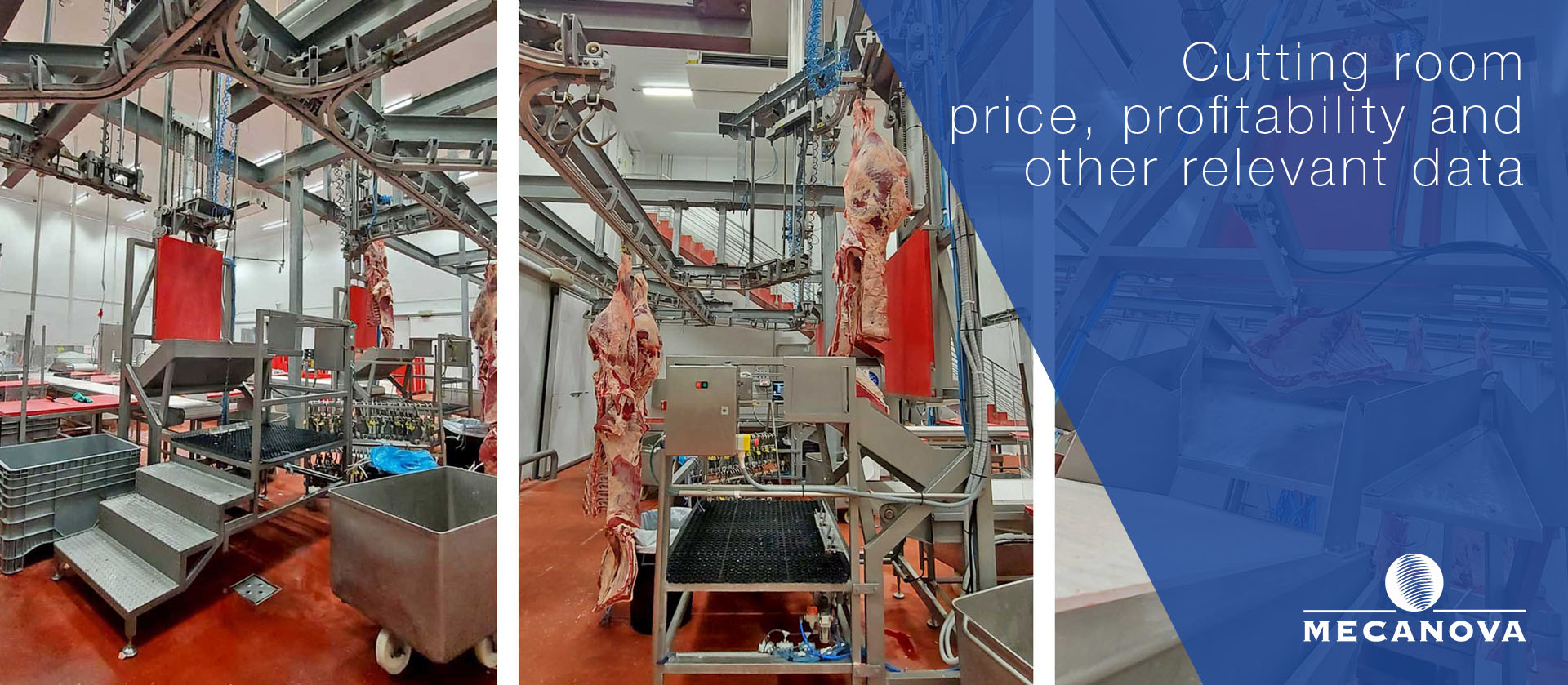Cutting room, price, profitability and other relevant data

The cutting room is a fundamental work space in a slaughterhouse, beying one of the greatest investments of the company. Find out the cost of a cutting room and its profitability.
What is a cutting room?
The cutting room can be: from a simple set of furniture intended to carry out the manual operations of chopping and deboning the carcasses(in the case of manual installations of little production); to an installation made up of a set of installations and equipment that facilitate the movement of carcasses and pieces among the different points of manual and automatic operations that maximize productive capacity with a minimum of workforce, (in the case of installations of greater capacities).
The equipment or machines are fundamentally logistical since they carry out functions of displacing carcasses, pieces or boxes. Here we find aerial conveyors, conveyor belts for cuts and conveyor belts for boxes with product. Although they may also include automatic saws, barkers, circular knives, rotary tables, static tables, metal detectors, scales, etc., depending on the production capacity.
Within an slaughterhouse, the most labor-intensive operation is cutting. Therefore, the design and operation of the cutting room directly affects the cost of production. As long as it can minimize the cost of labor per kg deboned (added to the amortization cost of the equipment), the more profitable it will be.
In this sense, the most profitable rooms will be those that, thanks to their price, logical, ergonomic design for the workers and efficient in terms of flowcharts, can maximize production in kg per hour of work with a minimum allocation of equipment amortization costs. This will make his owner much more competitive in costs and will give him the opportunity to maximize his profitability.
How to make a profitable cutting room?
The most important factor in achieving maximum profitability in the price of a cutting room is the design, which must be considered are:
- Productivity in animals/hour.
- The degree or level of deboning or number of cuts to be obtained.
The larger an installation is, the more processes can be automatized; as certain automations need a minimum of production to justify the substitution of workforce for equipment or machines. That depends on the investment recovery period that each client have consider, based on the financial structure of his company..
The design should also consider the space required in terms of buildings and cooling equipment amortization.
The design of the cutting room is something very personal, not only because of the above mentioned factors, but also because the different cultural features. of each country (or market). There are pieces that require ways of manage that determine both design and equipment, affecting then the price of the cutting room.
When we are faced with the design of a new cutting room, we may enjoy design freedom with a new building or we may have to adapt the design to an existing building.
Finally, to have a profitable cutting room in terms of price, it is not only necessary to know all the above mentioned factors, but also requires a good dose of experience in different markets and clients with diverse ways of working, a deep knowledge of machinery and components and a team of electronic engineers capable of achieveing the best management of a line by minimizing bottlenecks.
Do you need to reduce cutting operations and increase your production?
Tell us your needs and we will quote you a new cutting room.




